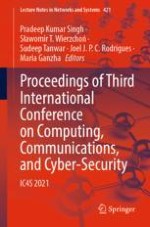Abstract
Reforms and revolutions are periodic in nature, a cyclic process they are and with innovations in technology and analytics, the idea of learning education has transformed into experiencing the education. With every Industrial Revolution, education pattern, its content and delivery got new dimension. Education in India has been categorically segregated as primary, junior, middle, senior, undergraduation, post-graduation, and research degrees. Aspirants are usually aware and well informed till they reach research degrees level and beyond. With macro- and micro-options within specializations, scholarships, center for excellence, availability of experts, eligibility criteria, research trends, technological advancements, procedural steps during the course, live projects associated, financial aspects, and education policies, the whole process becomes a huge unsolved mystery and aspirants might miss better opportunities which otherwise he might have gone for. The work carried is an effort to identify a fuzzy-assisted pattern for the aspirant to make an informed decision about the research option he or she can avail for enhanced growth. Study proposes a data analytics model for the informed intelligent selection toward optimum research carrier. The selection is assisted by number of weighted parameters which an aspirant should take into consideration while selecting a particular domain. SWARA technique was used for estimating weights of criteria based on experts’ preferences further to establish feasibility of the technique proposed, an empirical study of sustainable organization selection taken under hesitant fuzzy (HF) environment. The data used for the research work was obtained from Zenith Ph.D. Training & Consultancy (ZPTC), Jaipur, proposed technique was tested on data from 300 universities. The organization focusses and specializes in doctoral fellowships, examinations, processes, and regulations in India and has huge database for the same. Priority order \({G}^{*}\) was computed, and degree of utility was estimated (\({\uplambda }_{i}\)) for the proposed analysis. The degree of utility came as 99.8% for K3, 93.1% for K2, and 86.4% for K4. With estimated values, it was established that aspirants preferred organizations in following order K3 > K2 > K4 > K1 > K5 > K6.
